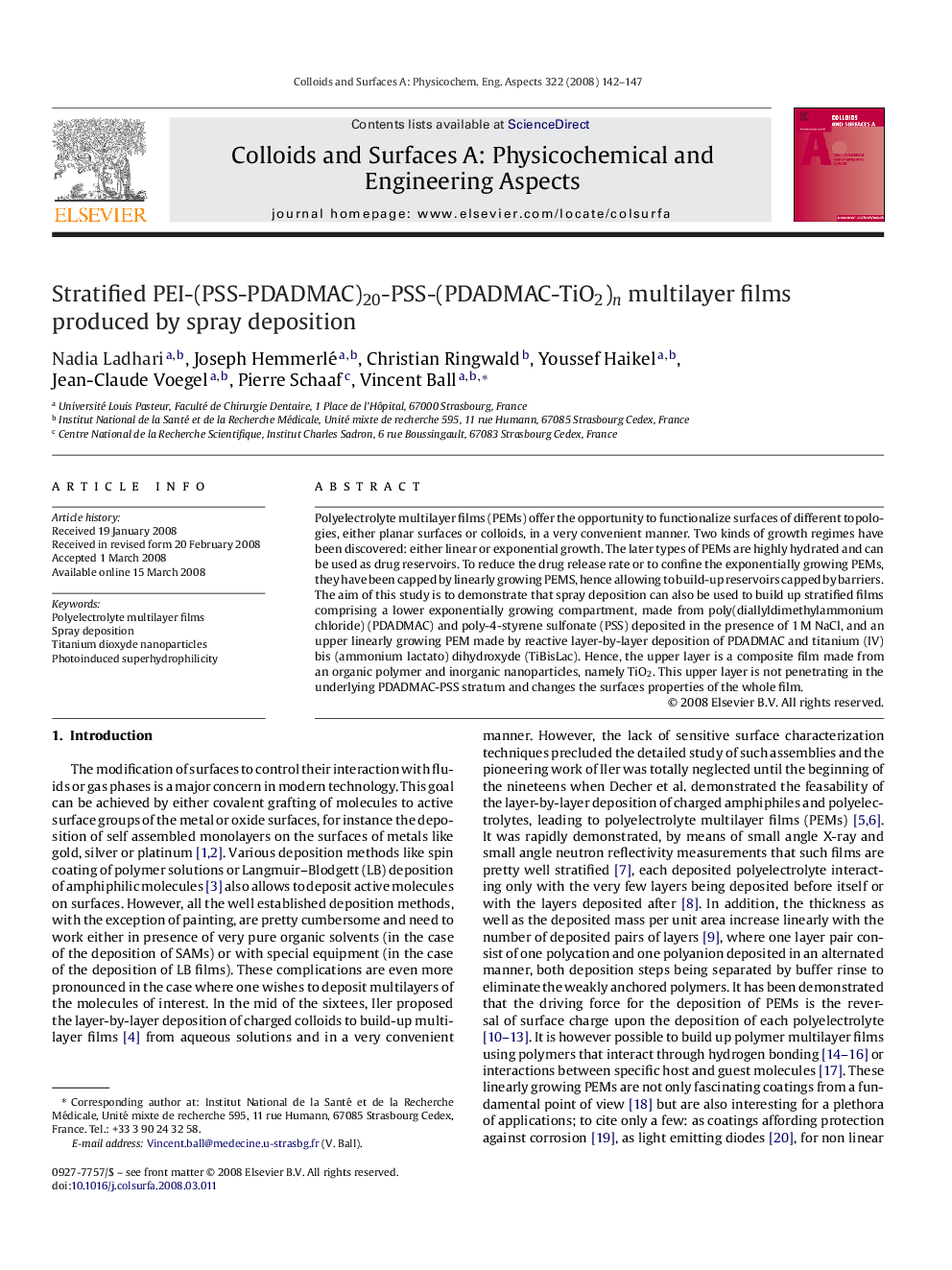| Article ID | Journal | Published Year | Pages | File Type |
|---|---|---|---|---|
| 596505 | Colloids and Surfaces A: Physicochemical and Engineering Aspects | 2008 | 6 Pages |
Polyelectrolyte multilayer films (PEMs) offer the opportunity to functionalize surfaces of different topologies, either planar surfaces or colloids, in a very convenient manner. Two kinds of growth regimes have been discovered: either linear or exponential growth. The later types of PEMs are highly hydrated and can be used as drug reservoirs. To reduce the drug release rate or to confine the exponentially growing PEMs, they have been capped by linearly growing PEMS, hence allowing to build-up reservoirs capped by barriers. The aim of this study is to demonstrate that spray deposition can also be used to build up stratified films comprising a lower exponentially growing compartment, made from poly(diallyldimethylammonium chloride) (PDADMAC) and poly-4-styrene sulfonate (PSS) deposited in the presence of 1 M NaCl, and an upper linearly growing PEM made by reactive layer-by-layer deposition of PDADMAC and titanium (IV) bis (ammonium lactato) dihydroxyde (TiBisLac). Hence, the upper layer is a composite film made from an organic polymer and inorganic nanoparticles, namely TiO2. This upper layer is not penetrating in the underlying PDADMAC-PSS stratum and changes the surfaces properties of the whole film.
